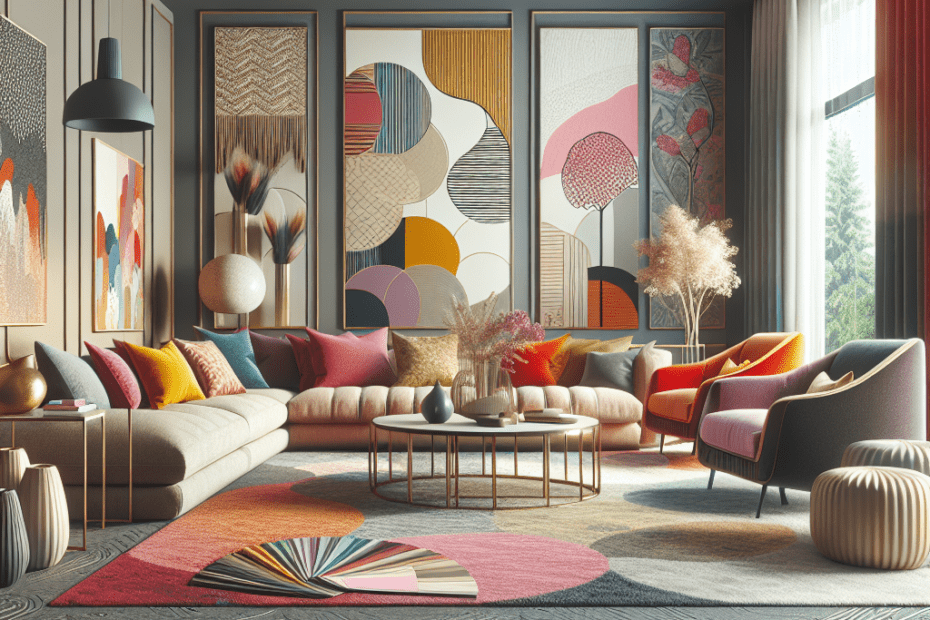“`html
Designing a Balanced Room with Color and Texture
Every homeowner dreams of creating a space that echoes tranquility and harmony. Yet, achieving a perfect balance in a room can be quite the challenge. They often turn to the use of color and texture to achieve this elusive harmony. Both can significantly transform the way a room feels and looks. By mastering the balance of color and texture, one can turn any ordinary room into an extraordinary masterpiece.
The Importance of Balance
Designers believe that balance is crucial in interior design because it ensures that no single element of a room overpowers another. They have observed that when colors and textures are strategically aligned, they create a seamless flow. According to a study by Houzz, 70% of homeowners prioritize color coordination when redecorating, showing just how significant color schemes are to them.
The Role of Color
Colors carry different emotions and can affect one’s mood. They provide a room with its primary energy source. For instance, warm colors such as reds, oranges, and yellows can energize a space, while cool colors like blues, greens, and purples can soothe the mind. They find it essential to understand the color wheel and select complementary colors for a cohesive look. According to a survey by Statista, 42% of people believe that the right choice of color positively influences their daily mood.
The Impact of Texture
Texture adds depth and dimension to a space. They find it valuable to mix different materials and finishes, creating a multi-layered effect that enhances a room’s aesthetic appeal. For instance, soft textures such as velvet or silk can add richness to a room, while rough textures like brick or wood can add rugged charm. In their research, RoomSketcher points out that 61% of interior designers use texture to highlight key areas in a room, making it a popular strategy in the design world.
Achieving the Balance
They often face challenges when attempting to balance color and texture. However, achieving this balance isn’t as difficult as it might seem. Here are steps they can take:
- Start with a Neutral Base: They can use whites, grays, or beiges to ground the room. This provides a canvas on which other colors and textures can shine.
- Add Layers of Texture: They are encouraged to integrate a variety of materials and surfaces. Pairing smooth and glossy with rough and matte can create interesting contrasts.
- Choose a Color Palette: They should select 2 or 3 primary colors and incorporate these in various shades throughout the space to maintain a cohesive look.
- Use Accent Pieces: Accessories like pillows, rugs, or wall art can be used to introduce pops of color and texture without overwhelming the space.
- Evaluate and Adjust: They should assess the room to ensure that both color and texture are balanced. Sometimes, small adjustments, like changing a throw pillow or adjusting lighting, can make a significant difference.
The Power of Balance: A Case Study
Let’s consider a practical scenario. They have a living room and wish to achieve harmony by balancing color and texture. They begin by painting the walls a soft beige, a neutral choice that allows other elements to pop.
| Element | Description |
|---|---|
| Sofa | A large soft-textured, deep green velvet couch |
| Coffee Table | Natural wood with a rough finish |
| Rug | Pale blue with a subtle geometric pattern |
| Throw Pillows | Mix of silk and knitted fabrics in gold and tan hues |
In this space, they have harmonized the cool-toned dark green with the warm tones of the gold pillows and natural wood, creating an inviting and well-balanced environment.
Key Takeaways
- A balanced room requires careful integration of both color and texture.
- Neutral colors provide a foundational base, allowing other elements to stand out.
- Textures add depth, while colors set the room’s mood and energy.
- The strategic use of accent pieces can enhance the room’s design without disrupting balance.
- Regular evaluation and adjustments further help maintain balance.
FAQ
- How do colors affect mood in a room?
Colors can invoke different emotions; warm colors often energize, while cool colors can provide tranquility.
- What is the first step in designing a balanced room?
Starting with a neutral color base allows other design elements to shine and prevents overwhelming the space.
- Why is texture important in a room?
Texture adds depth to a room and can highlight key areas, creating a visually interesting space.
- Can they use multiple colors in a single room?
Yes, but it is best to limit to 2 or 3 primary colors to keep the room cohesive and balanced.
- How do they know if their room is balanced?
Visually assessing whether any element feels overpowering or out of sync and making adjustments accordingly can help maintain balance.
“`
